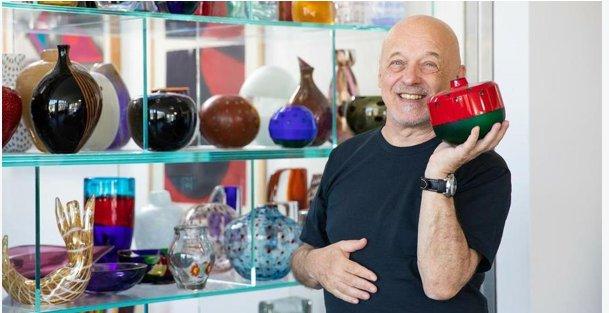Since the beginnings of glass production in the third millennium BC, glass has been of particular interest, primarily in the world of art. With its very specific properties and requirements for artistic processing, glass joins the ranks of materials preferred by artisans, such as wood, stone, or metal. It surpasses them, at least in the eyes of glass art lovers, with its combination of transparency and versatility in color and shape as well as the unique tension between timelessness and fragility.
In visual art, it is, above all, the names of individual artists who are representative of an entire discipline. The classical sculptor Michelangelo Buonarotti, the sculptures of Richard Serra, and figures and reliefs by Franz Abart – different eras were characterized by stylistic trends, but especially by individual artists. Even if glass art is also associated with internationally renowned names, it is, above all, the provenance – the local origin – that inspires collectors, represents exceptional quality, and, not least, determines the value of a glass object as a collector’s item. The name of the small Venetian island of Murano is representative of more than seven centuries of glass art at the highest level. Murano glass objects have been conquering the world at least as far back as the Renaissance and continue to delight not only die-hard collectors but also captivate every observer with their unique interplay of shapes and colors.
With some undeniably impressive prices – in 2019, for example, the Murano glass bowl "COPPA DELLE MANI" by Tomaso Buzzi from the 1930s fetched a record sum of around 300,000 euros at a Christie’s auction – credible proof of provenance becomes even more critical. In addition to the characteristic features of genuine Murano glass, such as small air pockets, the typical color intensity and the play of colors, gold or silver inlays, or even slight imperfections that make up the special charm of Murano glass objects, the primary focus for buyers is above all the trustworthiness of the seller.
As a passionate collector, Swiss-born Peter Grünbaum has made a name for himself over decades as an expert and trustworthy supplier of Murano glass objects. His "1000 Objects" collection offers Murano glass not only in the astronomical price ranges described above, which have rarely been reached in recent years anyway but also collector’s items in all kinds of price categories. However, Peter Grünbaum’s customers can always be sure that they are investing in genuine Murano glass, whose provenance the “pathological collector” stands for with his name.
The collector’s online store currently offers more than 200 vases and design objects made of Murano glass for purchase with confidence. These include pieces for less than CHF 3,000, such as the sculpture "Amplesso" by the Italian artist Fulvio Bianconi from 1979, as well as some collector’s items, such as the rare and important mosaic vase "Mosaico" by Vetreria Artistica Barovier for CHF 120,000.
Other highlights of the collection are the colorful glass bowl by Toots Zynsky, "Filet-de-verre," in a lively interplay of red, blue, yellow, and green from the collection of Thierry Guerlain or objects by Yoichi Ohira, also from this collection, which combines glass art and Zen in gentle color gradients.
As proof of provenance, Peter Grünbaum documents the previous owner of each object. The majority of these are collections of renowned personalities, such as Gian Battista Farina, the founder of the famous design house Pinin Farina, from whom Grünbaum personally received the Murrine vase Ercole Barovier made in 1930.
A large number of the vases and objects offered in this way have been examined by international experts and found to be authentic. In addition, an accommodating return policy offers buyers additional security if they choose to purchase one of the unique objects.
Grünbaum AG
Hardturmstr. 66
CH8005 Zürich
Telefon: +41 (79) 66057-88
http://www.1000-objekte.ch
Inhaber
Telefon: +41796605788
E-Mail: gruenbaum@me.com
![]()
